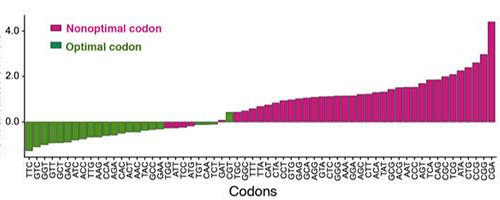by Iqbal Pittalwala, University of California – Riverside A study examining the effect of the immune receptor known as Toll-like Receptor 4, or TLR4, on how memory functions in both the normal and injured brain has found vastly different cellular pathways contribute to the receptor’s effects on excitability in the uninjured and injured brain. Further,...
Tag: <span>neuronal</span>
Defects in the ‘Swiss-army knife’ of gene expression may contribute to neuronal diseases like Alzheimer’s
The growth, death, and diseases of complex organisms rely on the flow of information — from genes in DNA, through their transcription into RNA, and then translation of that transcript into proteins, which in turn build much of the living organism. Proteins that control this whole process are themselves subject to this overarching information flow...
Protein in blood protects against neuronal damage after brain hemorrhage
UNIVERSITY OF ZURICH Patients who survive a cerebral hemorrhage may suffer delayed severe brain damage caused by free hemoglobin, which comes from red blood cells and damages neurons. Researchers at the University of Zurich and the UniversityHospital Zurich have now discovered a protective protein in the body called haptoglobin, which prevents this effect. Bleeding in the narrow space between the inner and middle meninges...
Stroke: Preventing the damage by acting on the neuronal environment?
To protect neurons and limit the damage after a stroke, researchers from the CNRS, the University of Caen-Normandie, University Paris-Est Créteil, and the company OTR3 have pursued an innovative path: targeting the matrix that surrounds and supports brain cells. Their results, just published in the journal Theranostics, have confirmed this strategy on rats and will...
Reducing neuronal inhibition restores locomotion in paralysed mice
Spinal-cord injury can render intact neuronal circuits functionally dormant. Targeted reduction of neuronal inhibition in the injured region has now enabled reactivation of these circuits in mice, restoring basic locomotion. When we decide to walk, the brain broadcasts commands through parallel neuronal pathways that cascade to executive centres in the lumbar region of the spinal...
Direct conversion of non-neuronal cells into nerve cells
In 2012, a team of scientists headed by Professor Benedikt Berninger first succeeded in reprogramming connective tissue cells present in the brain into neurons. Until now, however, it was completely unknown which intermediate states these pericytes pass through in the process, and how relevant these states are for successful reprogramming. Berninger and his team have...
- 1
- 2


